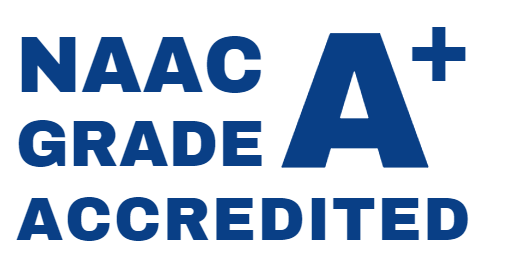AQAR 2022-2023
Criterion 7 – Institutional Values and Best Practices | ||
| 7.1.1 | Measures initiated by the Institution for the promotion of gender equity during the year 1. Annual Gender Sensitization Plan 3. Safety and Security, Counseling, Common Rooms with Other relevant information | |
| 7.1.2 | The Institution has facilities for alternate sources of energy and energy conservation measures | |
| 7.1.3 | Describe the facilities in the Institution for the management of the following types of degradable and non-degradable waste | |
| 7.1.4 | Water conservation facilities available in the Institution: 2. Borewell /Open well recharge 3. Construction of tanks and bunds 5. Maintenance of water bodies and distribution system in the campus | |
| 7.1.5 | Green campus initiatives include 1. Restricted entry of automobiles 2. Use of Bicycles/ Battery powered vehicles 3. Pedestrian-friendly pathways | |
| 7.1.6 | Quality audits on environment and energy are regularly undertaken by the institution 1. Clean and green campus recognitions/awards 2. Beyond the campus environmental promotional activities 3. Audit reports- Green audit, Energy audit, Environment audit. 5. Institutional policy on environmentally conscious and sustainability | |
| 7.1.7 | The Institution has a disabled-friendly and barrier-free environment 1. Built environment with ramps/lifts for easy access to classrooms. 2. Disabled-friendly washrooms 3. Signage including tactile path, lights, display boards and signposts 6. Bills and invoice/purchase order/AMC in support of facility | |
| 7.1.8 | The Institutional efforts/initiatives in providing an inclusive environment i.e. tolerance and harmony towards cultural, regional, linguistic, communal, socio-economic and other diversities | |
| 7.1.9 | Sensitization of students and employees of the Institution to the constitutional obligations: values, rights, duties and responsibilities of citizens | |
| 7.1.10 | The Institution has a prescribed code of conduct for students, teachers, administrators and other staff and conducts periodic programmes in this regard 1. The Code of Conduct is displayed on the website 2. There is a committee to monitor adherence to the Code of Conduct 4. Annual awareness programmes on Code of Conduct are organized | |
| 7.1.11 | Institution celebrates / organizes national and international commemorative days, events and festivals Annual report of the celebrations and commemorative events for the year | |
| 7.2.1 | The best practices as per the prescribed NAAC format | |
| 7.3.1 | Portray the performance of the Institution in one area distinctive to its priority and thrust | |
| 7.3.2 | Plan of action for the next academic year | |


